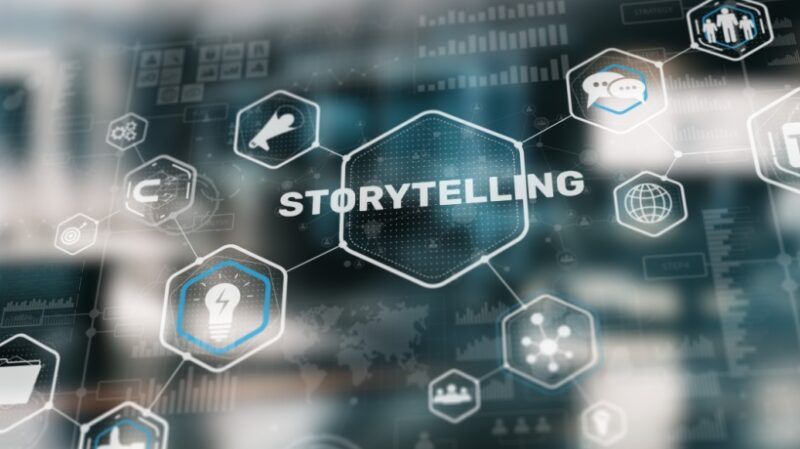

Engaging Minds Through Narratives: Transforming History
Most people alive today believe classrooms to be the typical four-walled enclosure where tutors impart knowledge to students. This traditional system is gradually giving way to a more modern method of education called eLearning. One thing that has remained constant, however, is that storytelling is a favorite for everyone. Stories are known to leave a lasting impression on people’s minds in a way that not many other things do. Storytelling is a powerful tool for enhancing retention and engagement between the narrative and learners of history. By incorporating storytelling in eLearning, historical figures and events are more relatable and memorable. In this article, we’ll discuss some good storytelling techniques and their impact on eLearning.
Understanding Storytelling Techniques In eLearning
Storytelling goes back in human history and can be seen in visual representations like archeological cave drawings and time-tested oral traditions. Stories have always had a way of fueling curiosity in students. Its significance lies in the creation of compelling narratives that make learners more invested in the subject matter.
By weaving storytelling into eLearning classrooms, tutors can transform historical facts into interesting narratives for better understanding. This also evokes more attention when historical information is brought to life in compelling ways as seen in this article on the gambling history of Ontario. Recasting complicated theories with the help of relatable stories guarantees that the concept gets assimilated better.
Techniques For Effective Storytelling
Integrating storytelling into eLearning courses requires deliberate planning and careful execution. Here are some effective techniques to implement for it to be successful:
Character Development
When developing a storytelling narrative, it’s necessary to find a way to get students to relate to the characters and overall plot. Learners should be able to connect emotionally with the historical figures and characters. The challenges they faced and the goals they succeeded in achieving should be communicated in a way that mirrors what learners might face in real life.
Sometimes during character development, there could occasionally be shifts into plot-driven perspectives. The point is to pivot back to the characters and remain focused on their interpersonal and intrapersonal relationships. Some good examples of effective character-driven stories in history are famed boxer Muhammad Ali and French general Napoleon Bonaparte.
Narrative Structure
Moving on from character arcs, having a well-structured plot is another crucial aspect of storytelling. It is the backbone of any engaging story, as a good narrative always keeps listeners connected. This can be done by introducing conflicts or challenges, escalating the tension, and ultimately coming to a resolution. This sort of pacing which constitutes the beginning, middle, and end of a narrative structure, helps with knowledge retention. It keeps them engaged and eager to see how a historical story unfolds.
Use Of Multimedia
To increase engagement among learners, multimedia elements like captivating visuals (images and videos) and sounds should be incorporated. These interactive animations and reenactments make the material more approachable and create immersive experiences which encourage participation. Infographics can also help convey key points through diagrams and graphical representations.
Visual imaging in eLearning always enhances the storytelling narrative and promotes understanding. With technological advancements, you can now take advantage of Artificial Intelligence (AI) tools to help generate unique multimedia elements. If getting the undivided attention of your audience is a priority, it’s important not to overlook this technique for effective storytelling.
Integrating Interactive And Collaborative Elements
Another layer of engagement in historical storytelling can be achieved by adding collaborative elements to the course. Simple methods like interactive quizzes, discussions, and situation-based study can be effective and useful. Generally, students retain a better memory of the content they interacted with, no matter how little the interaction may have been.
It’s also an opportunity to share insights, create interpersonal narratives, and key into the plot on an emotional level. The popular language platform, Duolingo, is one successful case study of an interactive eLearning project. Coursera, a leading education platform, has also recorded successes by incorporating real-world scenarios into its courses.
The Impact Of Storytelling On Learning Outcomes
As technology evolves, effective storytelling in eLearning will continue playing a vital role in improving knowledge retention. This infusion of entertainment into educational exposés can help foster more critical thought among students. It’ll also encourage a deeper understanding of historical contexts.
Conclusion
Storytelling techniques in eLearning shouldn’t be mistaken as a trend but recognized wholly for its transformative approach to education. By incorporating storytelling techniques, educators can significantly create immersive and engaging history lessons. It’s necessary then to embrace it to resonate more with learners and drive knowledge retention.